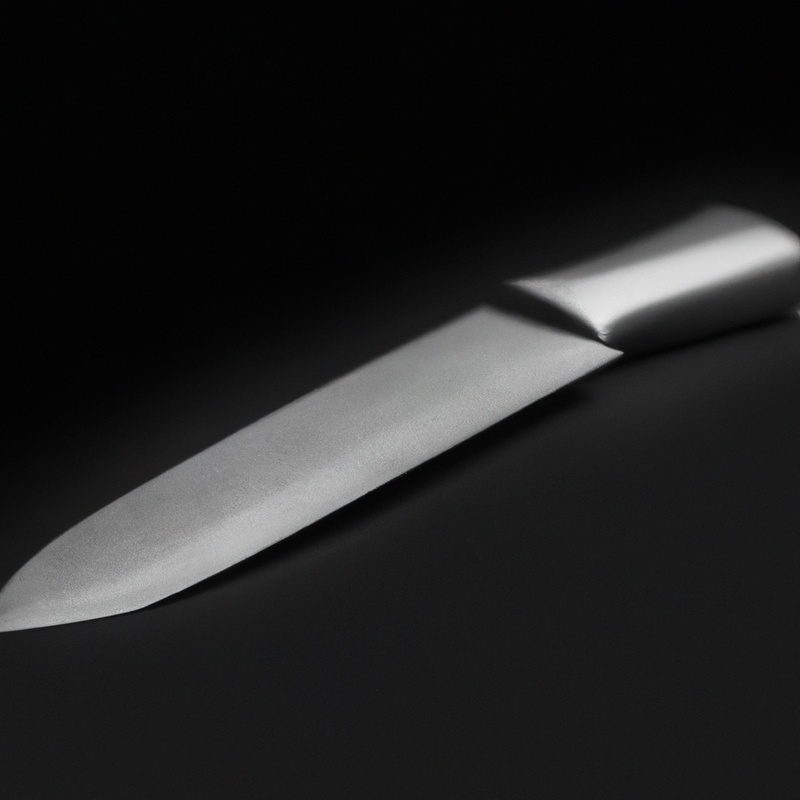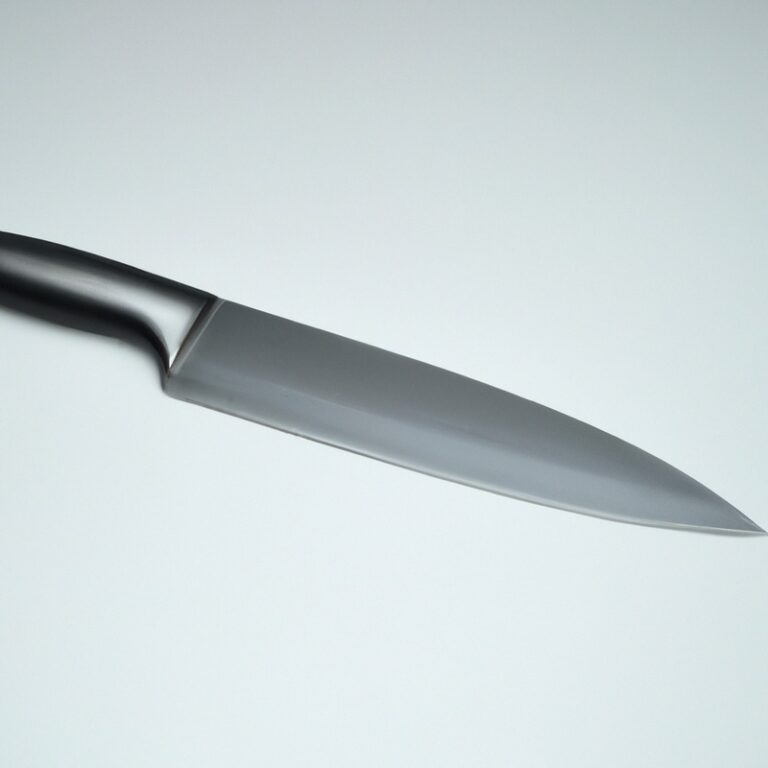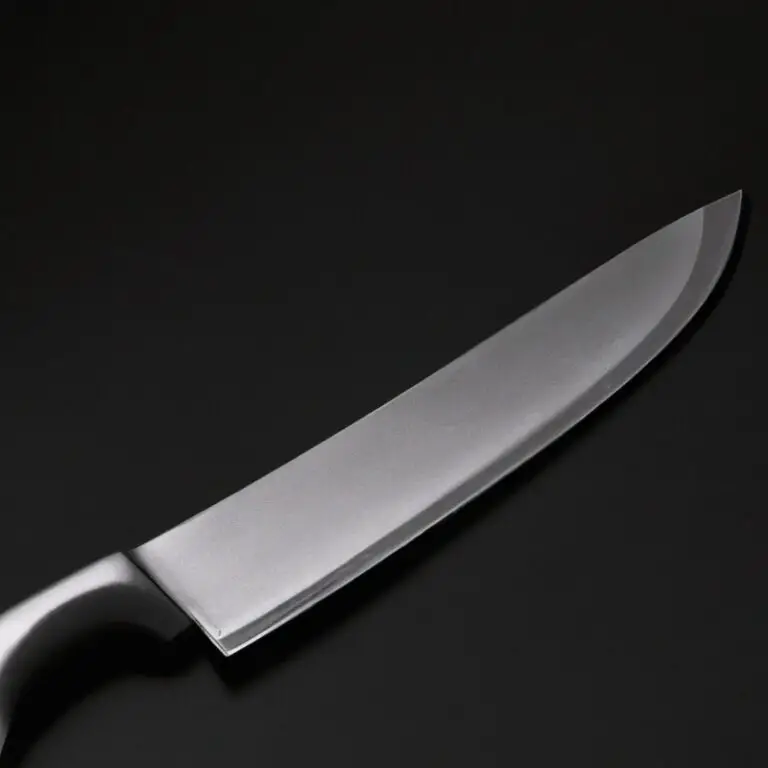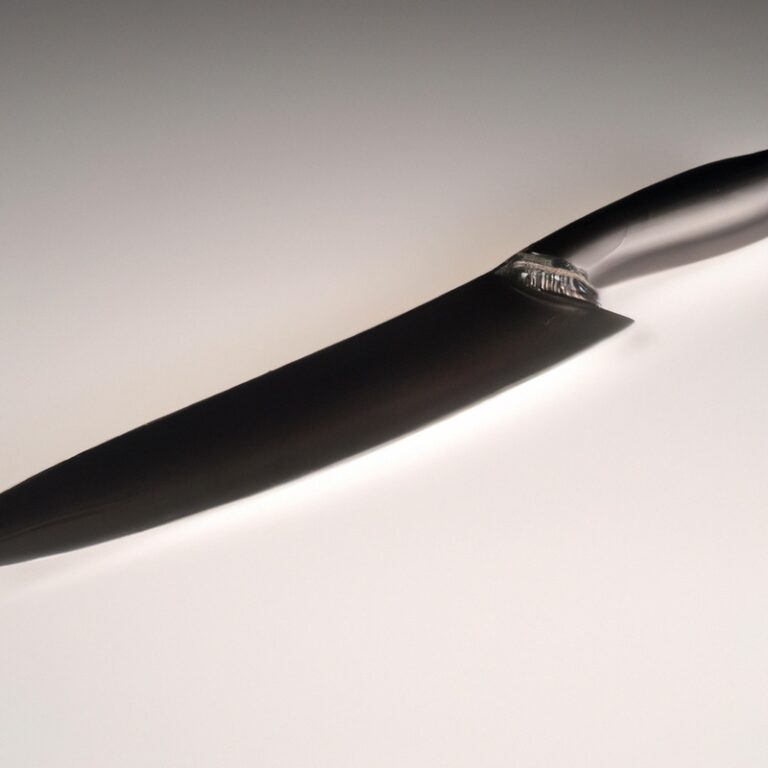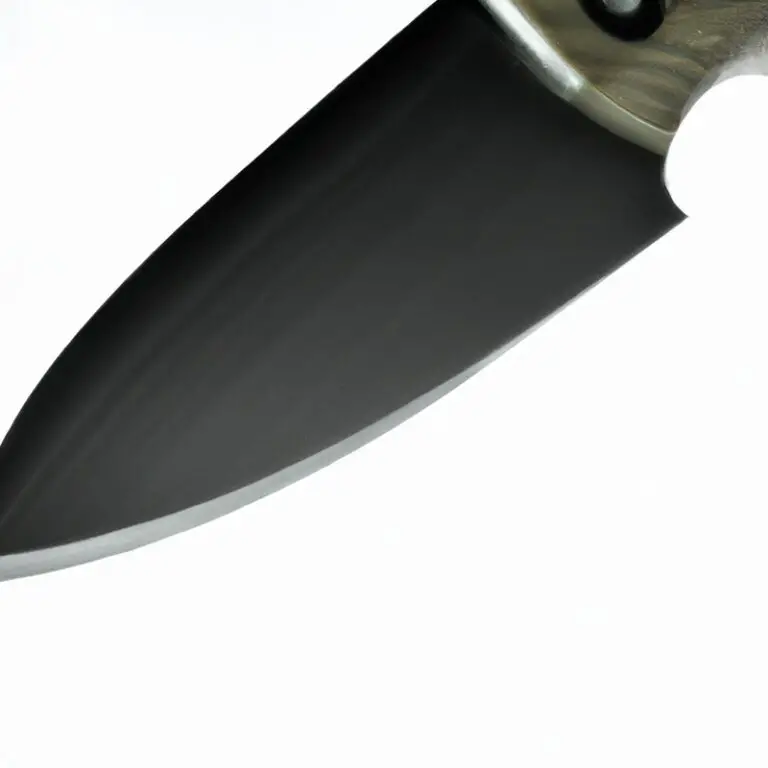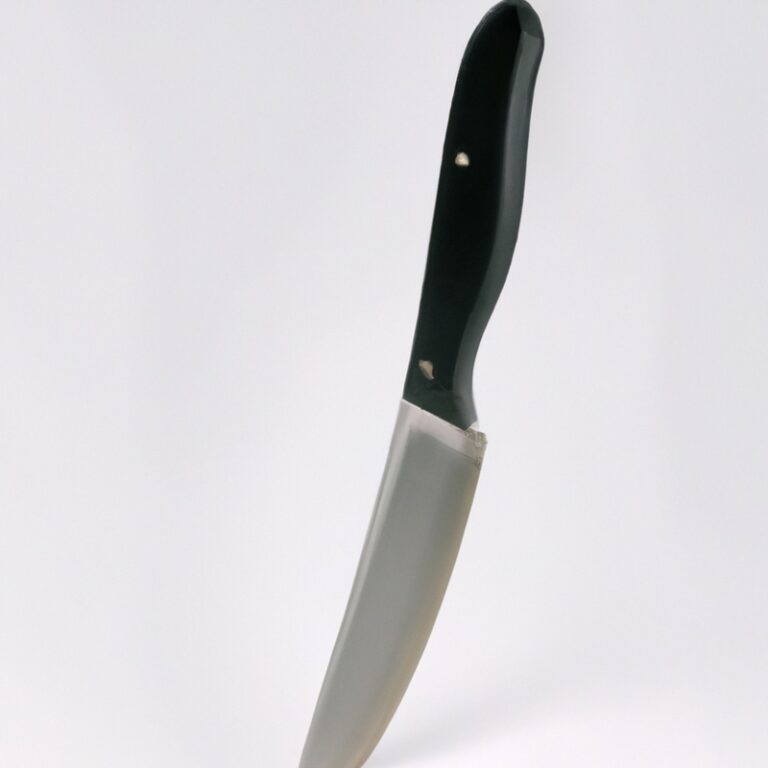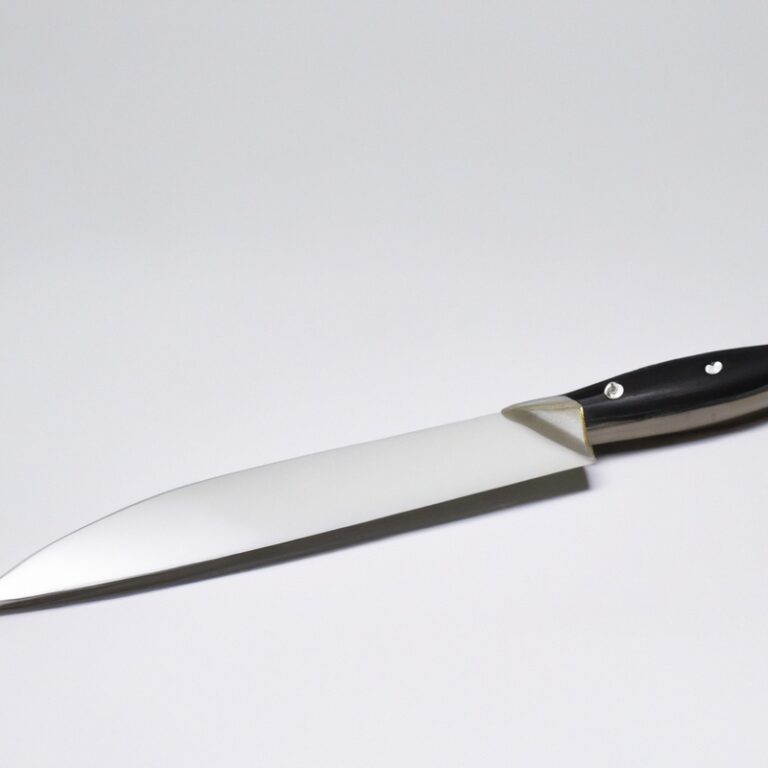How Does Knife Steel Influence Blade Corrosion Resistance?
Key Takeaways:
- Blade corrosion resistance is significantly influenced by the type of steel used in knife manufacturing.
- Stainless steel blades offer superior corrosion resistance compared to carbon steel blades.
- Blade composition, including the presence of elements like chromium and vanadium, affects corrosion resistance.
- Proper knife maintenance and care can further enhance blade corrosion resistance.
Have you ever wondered why some knives seem to rust more easily while others stay corrosion-free?
Well, it all comes down to the type of steel used in the blade.
As an expert in knife manufacturing, I’ve witnessed firsthand how different steel compositions, heat treatments, and finishes can dramatically affect corrosion resistance.
In this article, I’ll dive into the fascinating world of knife steel, exploring the chemical composition, heat treatment, and surface finishes that play crucial roles in determining a blade’s ability to fend off rust.
So, if you’re tired of dealing with rusty knives, keep reading to discover the secrets of blade corrosion resistance!
| Knife Steel | Corrosion Resistance |
|---|---|
| AUS-8 | Good |
| VG-10 | Very Good |
| S30V | Excellent |
| 154CM | Good |
| D2 | Fair |
| 440C | Poor |
Factors affecting blade corrosion resistance
Chemical composition of knife steel
The chemical composition of knife steel plays a significant role in its corrosion resistance.
Different elements, such as carbon, chromium, and nickel, are added in varying amounts to create specific properties.
For example, stainless steel contains a higher percentage of chromium, which forms a protective layer on the surface of the blade, making it more resistant to corrosion.
On the other hand, carbon steel has a higher carbon content, making it more susceptible to rust but also giving it superior cutting performance.
By understanding the chemical composition of knife steel, you can choose a blade that best suits your needs and maintenance preferences.
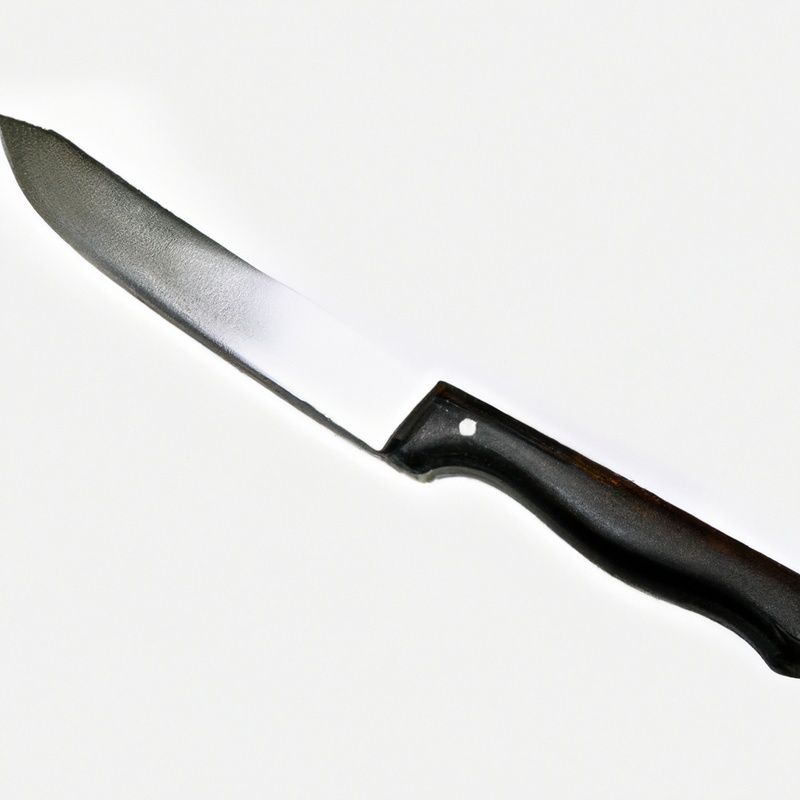
Heat treatment and hardness of the blade
The heat treatment and hardness of the blade play a significant role in its corrosion resistance. Proper heat treatment can enhance the blade’s durability and resistance to corrosion.
By subjecting the blade to specific heating and cooling processes, the steel’s microstructure can be modified to achieve the desired hardness and toughness.
Harder blades generally have better resistance to corrosion, but they may be more prone to chipping or breaking. Finding the right balance between hardness and toughness is crucial to ensure both longevity and performance of the blade.
Blade finish and surface treatment
Blade finish and surface treatment play a significant role in enhancing the corrosion resistance of a knife. A smooth and polished finish helps to prevent moisture, dirt, and contaminants from adhering to the surface, reducing the risk of corrosion.
Additionally, surface treatments such as chemical coatings or plating can provide an extra layer of protection against corrosion.
Common types of surface treatments include black oxide, DLC (Diamond-Like Carbon) coating, and ceramic coating. These treatments not only enhance the knife’s aesthetics but also improve its durability and resistance to corrosion.
Knife steel types and their corrosion resistance
Stainless steel
Stainless steel is a popular choice for knife blades due to its excellent corrosion resistance. It contains at least 10.5% chromium, which forms a protective layer on the surface of the steel, preventing rust and corrosion.
There are different types of stainless steel used in knives, each with its own unique properties.
Austenitic stainless steel is known for its high corrosion resistance and excellent strength. Martensitic stainless steel is strong and highly wear-resistant but may be more prone to corrosion.
Ferritic stainless steel offers good corrosion resistance but is less durable.
Lastly, duplex stainless steel combines the best qualities of both austenitic and ferritic stainless steel.
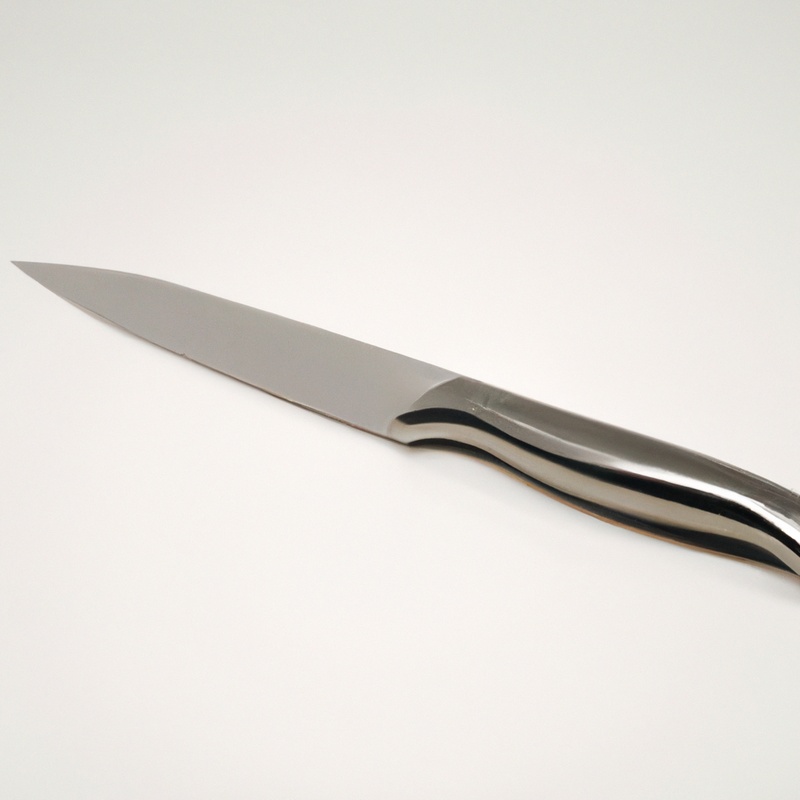
Austenitic stainless steel
Austenitic stainless steel is a popular choice for knife blades due to its excellent corrosion resistance.
It contains high amounts of chromium and nickel, which form a protective layer on the surface of the steel, preventing rust and corrosion.
This type of steel is also known for its good toughness and easy machinability.
Additionally, austenitic stainless steel is non-magnetic, making it suitable for applications where magnetism is a concern.
Overall, this steel type is a reliable option for knives that will be exposed to moisture and corrosive environments.
Martensitic stainless steel
Martensitic stainless steel is a type of stainless steel that offers excellent hardness, strength, and wear resistance.
It is known for its ability to be heat treated to achieve high levels of hardness, making it ideal for knife blades.
Martensitic stainless steel blades are also highly corrosion resistant and can withstand exposure to moisture and various environments.
Some popular examples of martensitic stainless steel used in knives include 440C and 8Cr13MoV.
These steels provide good edge retention and are relatively easy to sharpen.
Martensitic stainless steel is a popular choice among knife enthusiasts due to its excellent balance of hardness, corrosion resistance, and affordability.
Ferritic stainless steel
Ferritic stainless steel is a type of steel that is known for its excellent corrosion resistance.
It contains a higher percentage of chromium compared to other stainless steel types, which helps protect it from rust and corrosion.
Ferritic stainless steel is also highly resistant to stress corrosion cracking and has good heat resistance.
Its magnetic properties make it useful for applications where magnetism is required.
However, it is important to note that ferritic stainless steel is not as strong as other stainless steel types.
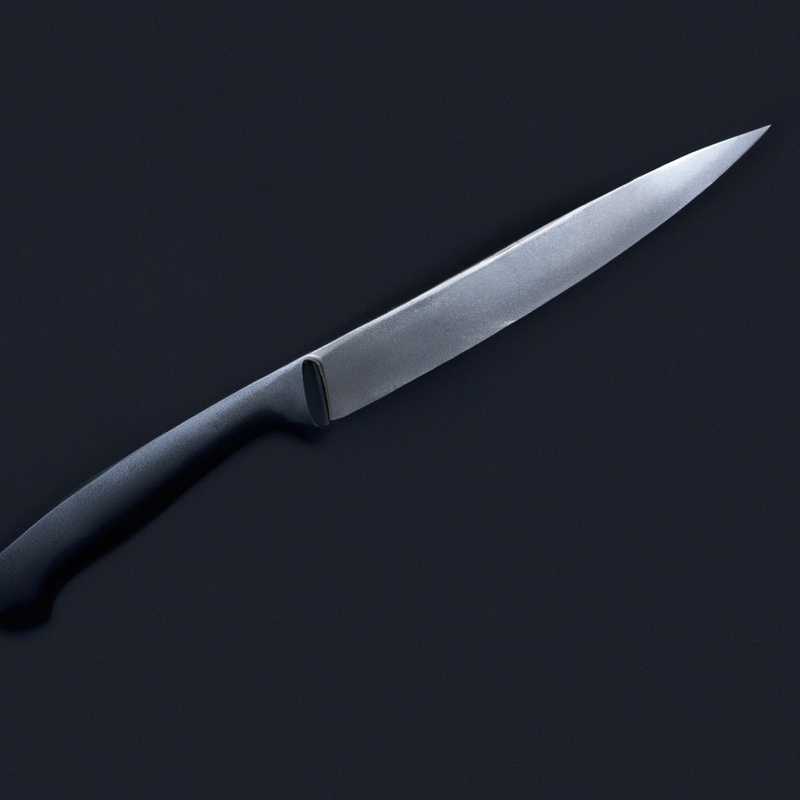
Duplex stainless steel
Duplex stainless steel is a type of steel that contains a combination of both austenitic and ferritic structures in its microstructure.
This unique composition gives duplex stainless steel excellent corrosion resistance properties, making it highly resistant to pitting and crevice corrosion.
Some key advantages of duplex stainless steel include its high strength, good weldability, and resistance to stress corrosion cracking.
It is commonly used in applications where corrosion resistance is essential, such as in marine environments or chemical processing plants.
Additionally, duplex stainless steel can also exhibit good toughness and ductility, further enhancing its suitability for various industrial applications.
Carbon steel
Carbon steel is a popular choice for knife blades due to its durability and sharpness. It is composed primarily of iron with a carbon content ranging from 0.6% to 1.5%.
The higher the carbon content, the harder and more brittle the steel becomes.
However, carbon steel is prone to corrosion if not properly maintained. To prevent corrosion, it is important to keep the blade clean and dry, applying a protective coating or oil when not in use, and storing the knife in a dry environment.
Regular maintenance is key to ensuring the longevity of carbon steel blades.
High carbon steel
High carbon steel is a popular choice for knife blades due to its exceptional hardness and edge retention. It contains a higher percentage of carbon compared to other steel types, which gives it its unique properties.
However, high carbon steel is more prone to corrosion than stainless steel.
To prevent corrosion, it is important to regularly clean and dry the blade, and apply a protective coating or oil. Regular maintenance is key to keeping high carbon steel blades in optimal condition.
Low carbon steel
Low carbon steel is a type of knife steel with a low carbon content, usually ranging between 0.05% to 0.3%.
The low carbon content makes it more resistant to corrosion compared to high carbon steel.
It is easier to maintain and less prone to rusting.
However, low carbon steel may lack the same edge retention and hardness as high carbon steel.
Ultimately, the choice of steel depends on your specific needs and preferences.
Tool steel
Tool steel is a type of steel that is specifically designed for making tools.
Unlike stainless or carbon steel, tool steel is primarily used for its hardness and resistance to wear and deformation.
It is often used in applications where high strength, toughness, and durability are required, such as in the production of cutting tools, dies, and molds.
Tool steel can be classified into different categories based on its composition and properties, including high-speed tool steel and shock-resistant tool steel.
These variations allow for a wide range of options depending on the specific application and desired performance characteristics.
High-speed tool steel
High-speed tool steel is a type of steel commonly used in the manufacturing of cutting tools and machining applications. It is known for its excellent toughness, high hardness, and resistance to wear and heat.
The high carbon content in the steel allows it to retain its hardness at elevated temperatures.
This makes high-speed tool steel ideal for applications that involve high-speed cutting, such as drills, milling cutters, and lathe tools. Additionally, the alloying elements present in high-speed tool steel contribute to its corrosion resistance, reducing the risk of blade rusting.
Overall, high-speed tool steel is a durable and reliable option for industrial cutting tools.
Shock-resistant tool steel
Shock-resistant tool steel is a type of steel that is specifically designed to withstand high impact and resist breaking or chipping. It is commonly used in applications where tools and components are subjected to heavy loads and sudden impacts, such as in hammer heads and chisels.
Shock-resistant tool steel is made by adding elements like silicon, nickel, and molybdenum to improve its toughness and ability to absorb shock.
This type of steel is highly valued for its durability and ability to withstand demanding conditions, making it a popular choice in the tool and manufacturing industry.
Corrosion prevention and maintenance
Proper cleaning and drying techniques
Proper cleaning and drying techniques are essential for maintaining the corrosion resistance of knife blades. Firstly, after each use, it is important to clean the blade using mild soap and warm water.
Avoid using abrasive materials that can scratch the steel surface.
Secondly, thoroughly dry the blade to prevent moisture buildup, which can lead to corrosion. Use a clean cloth or towel to remove all traces of water.
Thirdly, store the knife in a dry environment, away from moisture and humidity.
Remember to periodically inspect and clean your blades to ensure their longevity.
Applying protective coatings and finishes
Applying protective coatings and finishes to knife blades is an effective way to enhance corrosion resistance.
A coating acts as a barrier between the steel and the environment, preventing moisture and other corrosive agents from reaching the surface.
Common coatings include non-stick coatings like Teflon, ceramic coatings, and DLC (diamond-like carbon) coatings.
Additionally, finishes such as stonewashing or satin finishes can provide an extra layer of protection.
It’s important to note that these protective measures may require periodic reapplication, especially if the blade is subjected to heavy use or exposure to harsh conditions.
Regular maintenance and storage practices
Regular maintenance and proper storage practices are essential for maintaining the corrosion resistance of your knife blade. Here are some important practices to follow:
- Clean your knife after each use using mild soap and warm water. Avoid harsh chemicals that can damage the blade.
- Dry the blade thoroughly to prevent moisture buildup, which can lead to corrosion.
- Apply a thin coat of oil or lubricant to the blade to create a protective barrier against moisture.
- Store your knife in a clean, dry location away from excessive humidity.
- Consider using a knife sheath or case to protect the blade from scratches and other damage.
- Avoid storing your knife in extreme temperatures or direct sunlight, as this can affect its performance and corrosion resistance.
Comparing different knife steels for corrosion resistance
Testing methodologies for corrosion resistance
When testing the corrosion resistance of knife steel, there are a few common methodologies used.
One approach is the salt spray test, where the steel is exposed to a saltwater mist to simulate corrosive conditions.
Another method is the humidity test, where the steel is placed in a high humidity environment to assess its resistance to moisture-induced corrosion.
Additionally, some manufacturers conduct long-term field testing to evaluate how the steel holds up over time in real-world conditions.
Each testing methodology helps provide valuable insights into a steel’s corrosion resistance and helps inform the selection of the right knife steel for different applications.
Corrosion resistance comparisons between stainless steel types
When comparing the corrosion resistance of different stainless steel types, it’s important to consider their chemical composition and alloying elements.
Austenitic stainless steel, such as 304 and 316, is highly corrosion resistant due to its high chromium and nickel content.
Martensitic stainless steel, like 410 and 420, offers good corrosion resistance but is not as resistant as austenitic steel.
Ferritic stainless steel, such as 430, has lower corrosion resistance compared to austenitic and martensitic steel.
Duplex stainless steel combines the corrosion resistance of austenitic steel with the strength of ferritic steel.
Overall, it’s essential to choose the right stainless steel type based on the corrosive environment and application.
Corrosion resistance comparisons between stainless steel and carbon steel
When comparing corrosion resistance between stainless steel and carbon steel, there are some notable differences.
Stainless steel is known for its excellent corrosion resistance due to its high chromium content.
This creates a protective oxide layer that helps prevent rusting.
Different types of stainless steel, like austenitic, martensitic, ferritic, and duplex, have varying levels of corrosion resistance.
Carbon steel, on the other hand, is more prone to corrosion.
It lacks the chromium content that stainless steel has, making it more susceptible to rust and other forms of corrosion.
Overall, if corrosion resistance is a top priority, stainless steel is the better option.
However, proper maintenance and care can help improve the corrosion resistance of carbon steel blades.
Final Verdict
The type of knife steel used in a blade plays a crucial role in determining its corrosion resistance.
Factors such as the chemical composition, heat treatment, and blade finish all contribute to the overall corrosion resistance of the knife.
Stainless steel, with its various types like austenitic, martensitic, ferritic, and duplex, offers excellent corrosion resistance.
Carbon steel, on the other hand, is more susceptible to corrosion but can be mitigated with proper maintenance.
Ultimately, understanding the properties of different knife steels is key to choosing a blade that will resist corrosion and maintain its performance over time.
So, when selecting a knife, consider the steel it is made of to ensure longevity and optimal performance.

